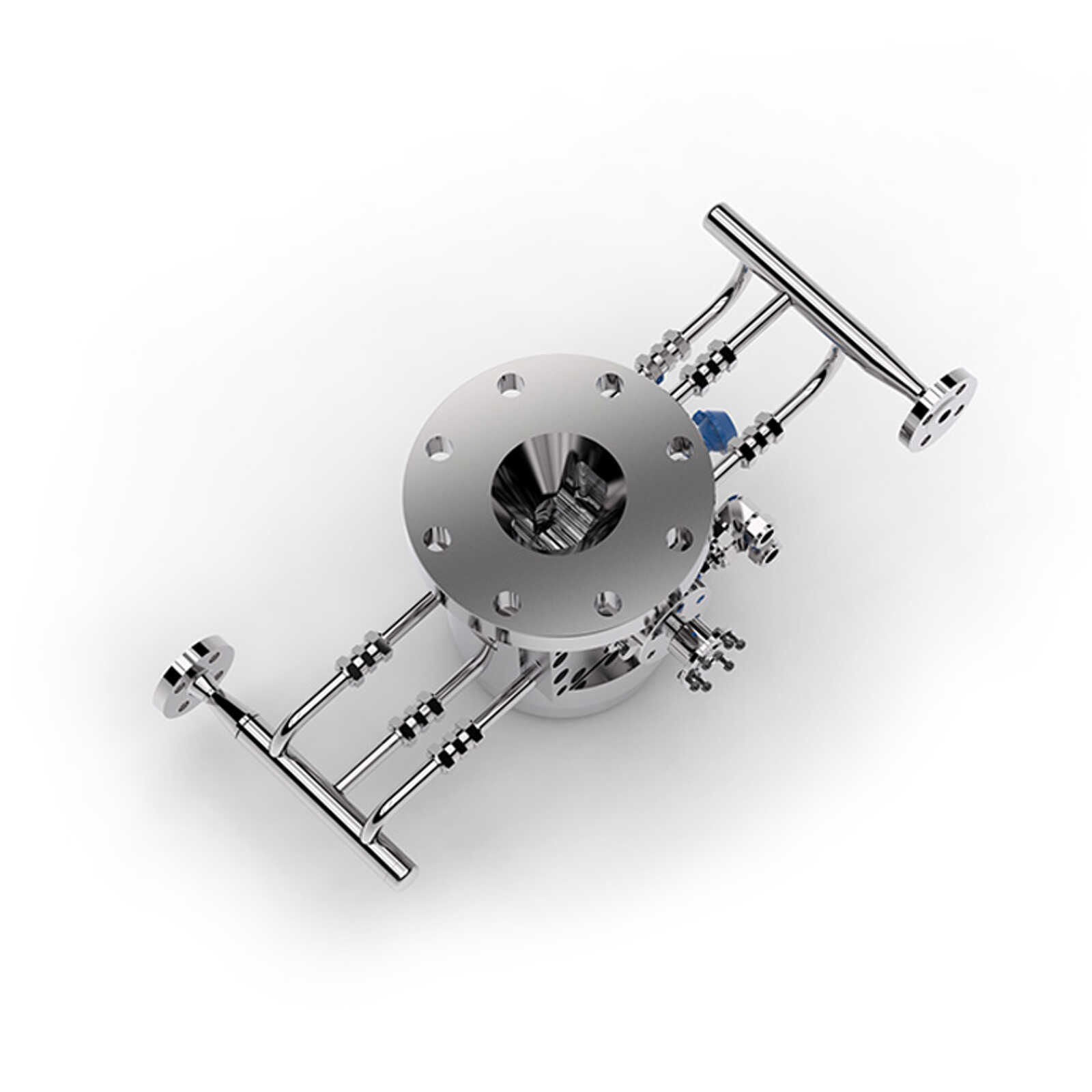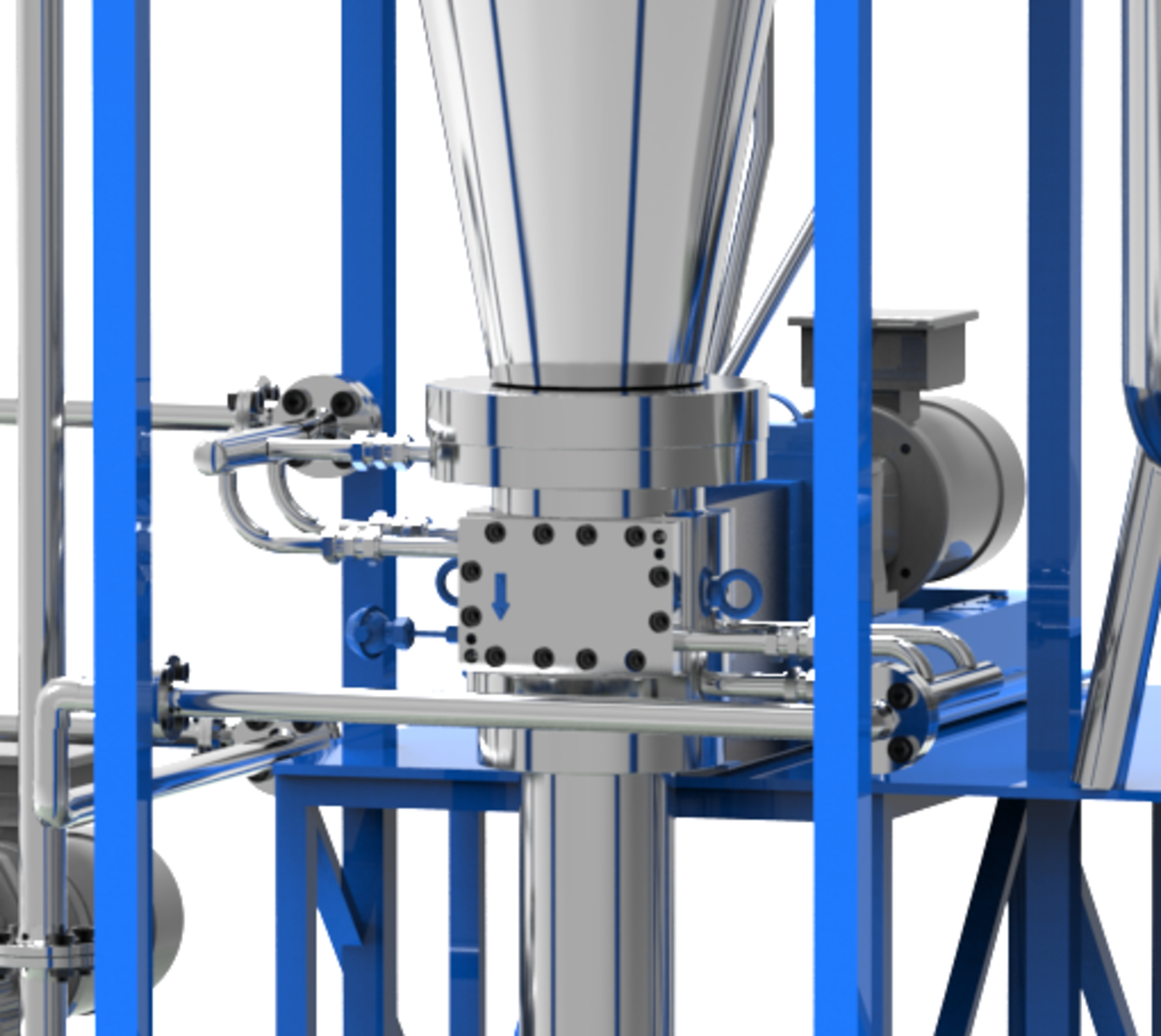Thermal separation process: The concentrate pump
In the thermal separation process, a concentrate pump is used in addition to the feed pump. The gear pump at the bottom of the column enables the gentle and uniform discharge of the concentrated medium.
The design, materials and pump size are based on the properties of the feed medium, in particular the changes generated by the column in terms of viscosity and rheological behavior of the fluid.

